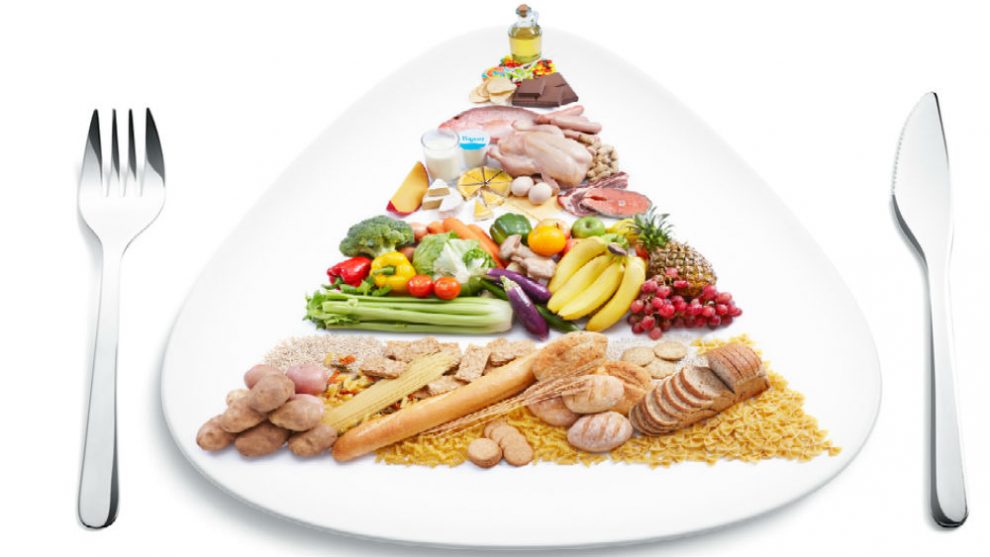The food pyramid is taught in schools to young children from an early age. It’s a commonly, well-known diagram that depicts the proportions and various food groups that should be consumed to have a balanced and healthy diet. However, it is clear that the western diet on average is far from this balanced range of foods and nutrients. With health and weight problems such as obesity, heart disease and diabetes on the rise and millions of people being diagnosed within the US alone each year, it is clear that such guidelines aren’t truly being followed and may not be the most effective way of encouraging people to have a healthy and balanced diet.
What does the original food pyramid look like?
The standard textbook diagrams of the original food pyramid show a large base that is composed of starchy, carbohydrates. This makes up the largest portion of the pyramid and consists of breads, pastas and cereals – complex carbohydrates that release energy in a slow and controlled manner. The next step up in the pyramid is a split between fruits and vegetables; these foods provide a wealth of mineral nutrients, vitamins and dietary fibre. Above the fruits and vegetables is another smaller split between proteins and dairy products. These products are focused on the growth, repair and strength of the body – the formation of strong bones and the development of healthy tissue. Finally, the smallest section at the top of the food pyramid is the ‘sweet foods’ section, comprising of cakes, sweets, chocolates and desserts. This portion provides sugars and fat to the diet.
What does the new food pyramid look like?
If we take into consideration the current issues of obesity and people being overweight, it isn’t difficult to suggest improvements for the original food pyramid model:
1. Reduce the carbohydrate intake or switch to healthier options such as wholemeal and wholegrain flour, bread and pasta. White flour products don’t provide as much fibre or nutrients as brown flour does, due to the refining process. Food such as rice should only be occasionally eaten due to its high-calorie content. This is helpful in developing countries, as it will provide a feeling of satiety; however in western diets it should be limited and only eaten from time to time.
2. Increase the intake of fruits and vegetables – Studies show that adults are not reaching their five a day minimum for fruits and vegetables. This means that people are eating more ready made and processed foods and not consuming or gaining the raw nutrients provided by fresh produce. Fruits and vegetables also provide dietary fiber, which aids the maintenance of healthy bowel movements and reduces the development of colon cancer.
3. Reduce high fat meats (red meat), high sugar, high salt and high cholesterol foods such as cheese, bacon, cakes and fried foods. All of these foods contribute to high blood pressure, heart disease development and increase the chances of becoming overweight. Low-fat alternatives may be chosen instead.





Add Comment